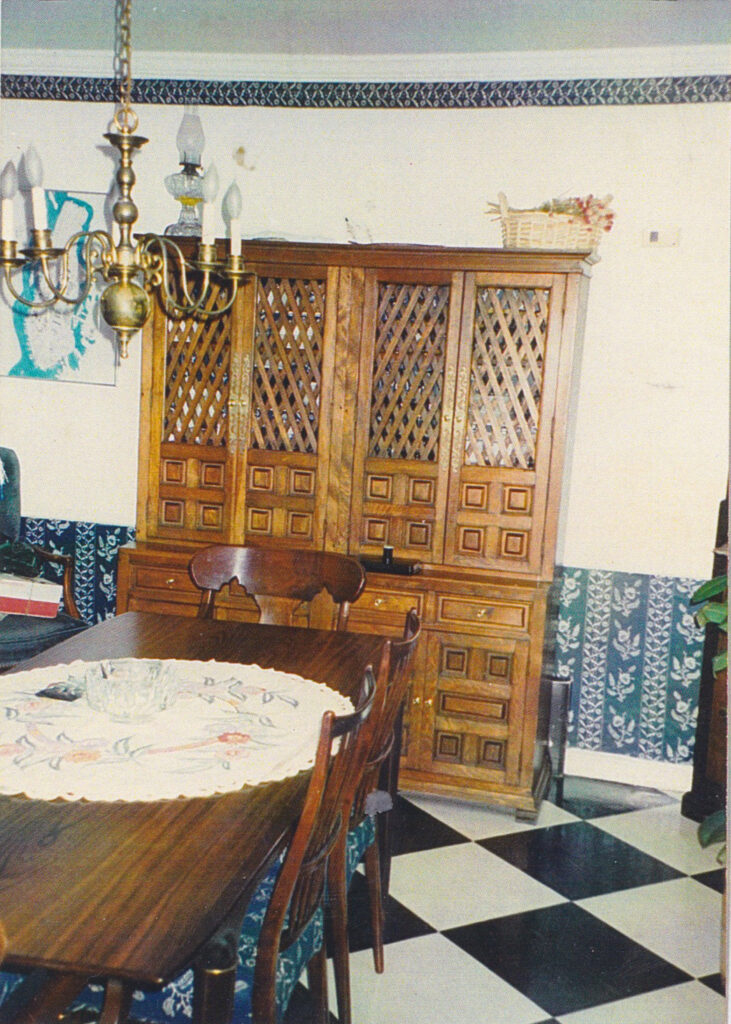When I attended PS 87 in Middle Village, it went through the 8th grade. In the 7th and 8th grades, the girls took a homemaking class and the boys a woodworking shop. Since I was a failure in the latter, I always envied the girls in the homemaking class. My failure was to a large extent Mr. Quinn the shop teacher, who in my opinion was not a good teacher. When entering a class for the first time, the student was given a piece of wood rectangular shaped that measured about 10 inches by six inches. We were told to plane all four sides and when finished to hand it to Mr. Quinn. He took it to the class window and with a 90-degree metal ruler, placed it on all four sides and held it up to of the window. If he could see any light between the edge of the ruler and the wood, it was rejected. You went back and started all over again. In my case for the two years that I attended that class, all I ever made was wood chips. Other students who satisfied Mr. Quinn went on to make other woodworks. Mr. Quinn’s insistence was “Straight, Square and Smooth.”
As a result of the above, I hated the words “Straight, Square and Smooth” and kept my distance from wood- working. After I married and bought a house which had consumed most of our assets, it was a house with not too much furniture. In particular was the dining room, which needed a large chest. When my wife returned from shopping in the neighborhood market, she occasionally brought home a 5-cent magazine called Woman’s Day. In flicking through it, I noticed that once a year there was an article by a carpenter in which he described five pieces of woodworking of different style, to wit: five tables, one early America, one Spanish etc. He also made clear that for one dollar he would send you the plans with which to make the piece you selected. One issue I looked at had five chests of different style. One was a Spanish style chest about three feet by six feet which I liked. I do not recall what possessed me (except we did need a chest) to send the dollar. I received the plans and noticed how clever the carpenter had been because all the wood one needed would be available at the good ‘ol lumber yard and milling would not be required. I noticed there was no requirement anywhere in the plans of “Straight, Square and Smooth.” So off I went and began working on the piece in my cellar. I was of course still employed at the time and would work on the piece at night after my children had gone to bed or on weekends. I was a practicing lawyer and, if engaged in a trial at the time, I would leave the piece unattended for as much as several weeks.
I had never worked with plans, let alone something as com- plicated as these plans. Furthermore, a piece three feet by six feet would be too small for the dining room wall! I had in mind that what I needed was six feet by six feet, so what I did was cut each piece of wood needed twice. I would end up with two three feet by six feet chests. When done, the two pieces would be placed against the dining room wall and bolted together into one piece. A single piece would then be placed on top as well as mouldings and hopefully there would be one large chest. This was my thinking, with no guarantee the piece would ever be completed. I should point out that at the time, other than a drill, I did not own electrical tools. I did have a large hand operated miter saw that had belonged to my friend’s deceased father who had been a carpenter. So, much of the cutting I did was by hand. As the work continued, the plans became more difficult. It seemed to be beyond my understanding. I was becoming extremely nervous and convinced I was beyond my capability and should abandon the project. I did not and have no explanation as to why I did not. As I continued, it was clear to me if the project turned out to be a failure, I would accept “Straight, Square and Smooth” as well as working with plans, as the answer to all woodworking projects. If it was a success, those requirements would no longer apply to me.
It took about one year to complete the project. LO AND BEHOLD! When finished, it was so beautiful I fell in love with it and by seeing it every day, that romance becomes more intense. Having been used almost daily for over forty years it has remained fully intact and never needed repairs. Furthermore, it became clear working with professional plans and “Straight-Square and Smooth” may work for others, but not for Ben Haber. By ignoring that requirement, I continued over the years to make plans just in my head, give it mental thought for weeks and to date I have built over 100 professional looking pieces of furniture not just for my home, but for those of my children’s homes, as well as gifts for many of my relatives and friends.
What I learned most of all from this experience was not just love for the chest and what followed, but the intense good feeling of making something worthwhile from nothing. For an accomplished amateur it was not “Straight-Square-Smooth.” It became creativity.




